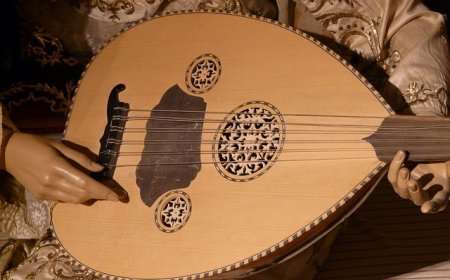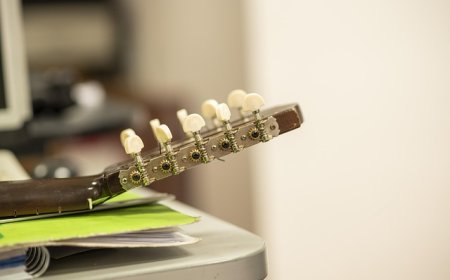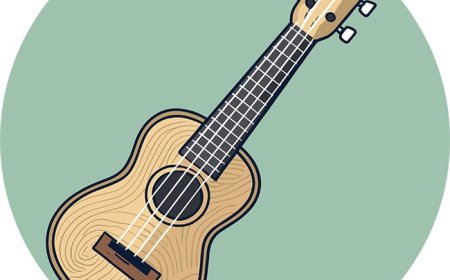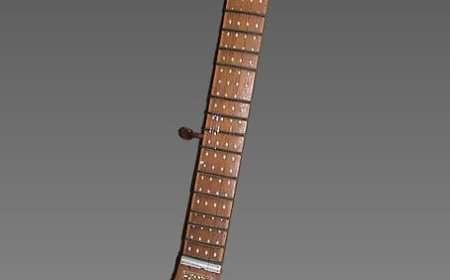Duduk Facts for Students | Learn About Armenia’s Ancient Woodwind Instrument
Discover the duduk for kids. Learn about this Armenian woodwind instrument and its soft sounds.
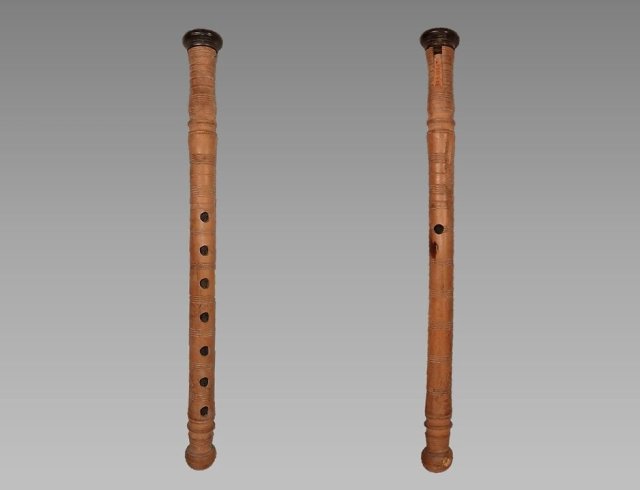
🎼 All About the Duduk
🥇 Introduction
The duduk is an ancient double-reed woodwind instrument from Armenia with a deep, emotional tone that sounds almost like a human voice. Played for over 1,500 years, the duduk is more than just an instrument-it's a symbol of the Armenian soul, used in everything from folk songs and weddings to movies and international music. Its warm, breathy sound is perfect for expressing deep feelings like love, sorrow, or peace.
🎶 What Is a Duduk?
The duduk is a flute-like instrument made from the wood of an apricot tree, with a large double reed that gives it a unique, soft tone. It is usually about 11 to 18 inches long and has finger holes on the front and back to change the notes.
It belongs to the woodwind family, like the oboe and bassoon, but has a much warmer and softer sound. The duduk is often played in pairs: one player performs the melody, while the other holds a drone note to create harmony.
🧩 Parts of the Duduk
Each part of the duduk plays a role in creating its haunting sound:
-
Body - A wooden tube made from aged apricot wood, with finger holes
-
Reed (Ramish or Ghamish) - A large, flat, double reed that vibrates to make sound
-
Mouthpiece - Where the player blows air to start the vibration
-
Finger Holes - Usually 7 in the front and 1 in the back for changing pitch
-
Tuning Ring - Sometimes used to adjust the reed and fine-tune the instrument
-
Drone Duduk - A second duduk playing a single note as background
The reed is the heart of the instrument and is carefully handmade by skilled artisans.
⚙️ How Does the Duduk Work?
The duduk makes sound when the player blows air into the reed, which vibrates inside the wooden body. This vibration creates a smooth tone that is shaped by covering and uncovering the finger holes.
Because the duduk uses a double reed, the sound is soft, breathy, and emotional. Players use special techniques like vibrato and dynamic control to add feeling to their performance.
One of the duduk's most famous features is the drone-a second duduk playing a low note under the melody. This creates a beautiful harmony, like a voice singing with a soft hum beneath it.
📜 History of the Duduk
The duduk has a long and proud history. It has been played in Armenia for over 1,500 years and is deeply connected to Armenian culture. In the past, it was used in:
-
Weddings and festivals
-
Religious ceremonies
-
Folk dances and storytelling
The duduk was recognized by UNESCO in 2005 as a Masterpiece of the Intangible Heritage of Humanity.
Today, the duduk is played in:
-
Folk music
-
Film scores and video games
-
Concerts and world music recordings
It's known around the world for its emotional and cinematic sound.
🥁 Famous Duduk Players
-
Djivan Gasparyan - The most famous duduk player, known as the "master of the duduk"
-
Gegham Margaryan - Armenian soloist and teacher of traditional duduk styles
-
Levon Minassian - French-Armenian dudukist known for film and world music work
-
Armenian Navy Band - A group that blends duduk with jazz and modern genres
-
Haig Yazdjian - Combines duduk with Middle Eastern and experimental sounds
-
Pedro Eustache - A Venezuelan world flutist who performs with the duduk in film music
🎶 Learning to Play the Duduk
The duduk is a bit harder to learn than a recorder or flute, but it rewards the player with beautiful, expressive music. Beginners start by:
-
Learning to blow air steadily into the reed
-
Developing lip control and embouchure
-
Practicing simple scales and finger patterns
-
Learning to control tone, breath, and vibrato
-
Listening to master players for style and expression
Because the reed is sensitive and large, it takes practice and patience to get a beautiful sound. But once learned, the duduk can touch hearts with every note.
😄 Fun Facts About the Duduk
-
The duduk is made from aged apricot wood-no other wood gives the same sound
-
It's often called the "voice of the soul" in Armenia
-
Duduk music was featured in Hollywood movies like Gladiator and The Passion of the Christ
-
It is recognized by UNESCO as part of humanity's cultural heritage
-
Traditional duduk players wear Armenian folk costumes during performances
-
The duduk can mimic human emotions like crying, sighing, and singing
-
It has only one octave of notes but is extremely expressive
👧 Kid-Friendly Summary
The duduk is a wooden instrument from Armenia that sounds soft and beautiful, like a person singing. It's made from apricot wood and uses a big reed to make music. It's very old and is still played today in songs, movies, and concerts. It's full of feeling and fun to learn!
📚 Vocabulary Words
- Duduk – A soft-sounding Armenian woodwind instrument made from apricot wood
- Reed – A thin piece of plant or plastic that vibrates to make sound in wind instruments
- Drone – A low, steady note played under a melody
- Embouchure – The way a musician shapes their mouth to play a wind instrument
- Vibrato – A gentle shaking of a note to make it sound more emotional
- Apricot Wood – The special wood used to make traditional duduks
- UNESCO – A world organization that protects cultural heritage
- Melody – The main tune or line of music
❓ Interactive Quiz (8 Questions)
1. Where is the duduk originally from?
A. Turkey
B. Armenia
C. Greece
D. Egypt
2. What is the duduk made from?
A. Bamboo
B. Metal
C. Apricot wood
D. Rosewood
3. What type of instrument is the duduk?
A. String
B. Woodwind
C. Percussion
D. Brass
4. What creates the sound in the duduk?
A. Plucked strings
B. Drums
C. A reed that vibrates
D. Piano keys
5. What is the purpose of the drone duduk?
A. To play fast notes
B. To play chords
C. To keep rhythm
D. To play a background note
6. What is vibrato?
A. A quick jump between two notes
B. A steady shaking sound
C. A long pause
D. A sharp loud note
7. Who is the most famous duduk player?
A. Yo-Yo Ma
B. Djivan Gasparyan
C. Ravi Shankar
D. Itzhak Perlman
8. What is special about the duduk’s sound?
A. It’s very loud
B. It sounds like a bird
C. It’s soft and emotional
D. It sounds like drums



















































